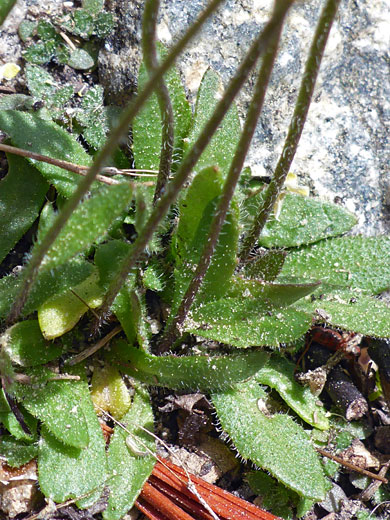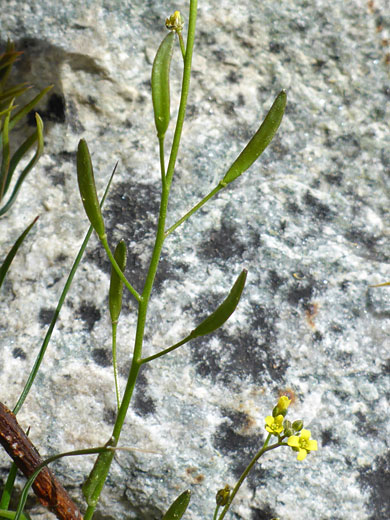Common names:
Slender draba, slender whitlow-grass
Family:
Scientific name:
Draba albertina
Main flower color:
Range:
From the Pacific states to the Rocky Mountains
Height:
Up to 12 inches
Habitat:
Rocky places, disturbed ground, meadows, streambanks, pine forests, from 3,000 to 12,000 feet
Leaves:
Obovate, up to 1.2 inches long, with entire, ciliate margins
Season:
June to August
Leaves of draba albertina are mostly basal, and stalked, though there may also be a few sessile leaves along the stem. Stems are moderately to sparsely covered by unbranched hairs towards the base, becoming glabrous higher up, while the leaves also have a covering of simple hairs on the upper surfaces; on the lower surfaces, hairs are divided, into up to four branches.
The inflorescence is a narrow, elongated, bractless cluster of up to 30 heads, attached by hairless pedicels. Sepals are yellow-green, and may have a few unbranched white hairs along the margins. Petals are yellow, and just a little longer than the sepals. Pedicels are spreading or ascending at the fruiting stage.
The inflorescence is a narrow, elongated, bractless cluster of up to 30 heads, attached by hairless pedicels. Sepals are yellow-green, and may have a few unbranched white hairs along the margins. Petals are yellow, and just a little longer than the sepals. Pedicels are spreading or ascending at the fruiting stage.
All Contents © Copyright The American Southwest | Comments and Questions | Contribute | Site Map




